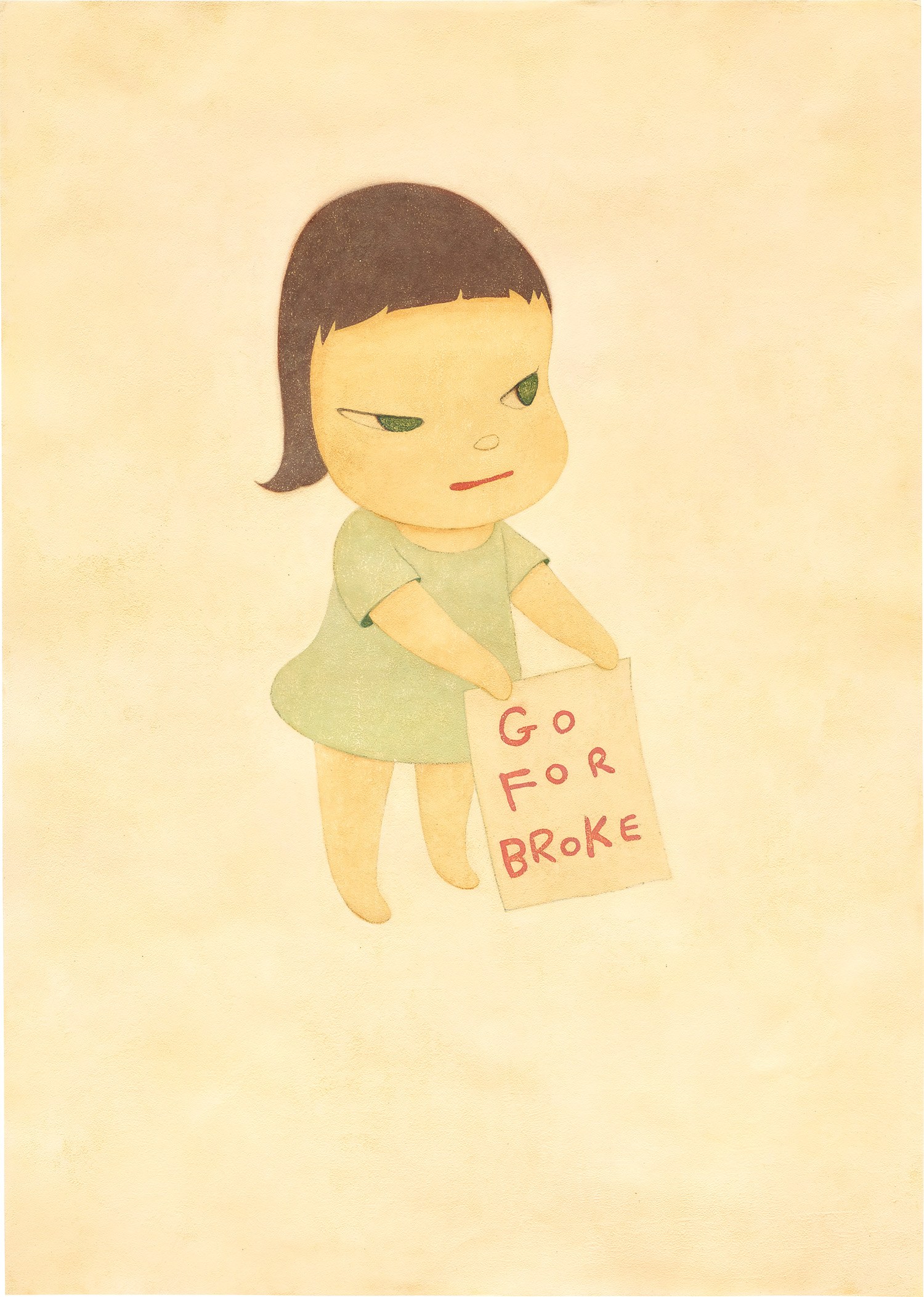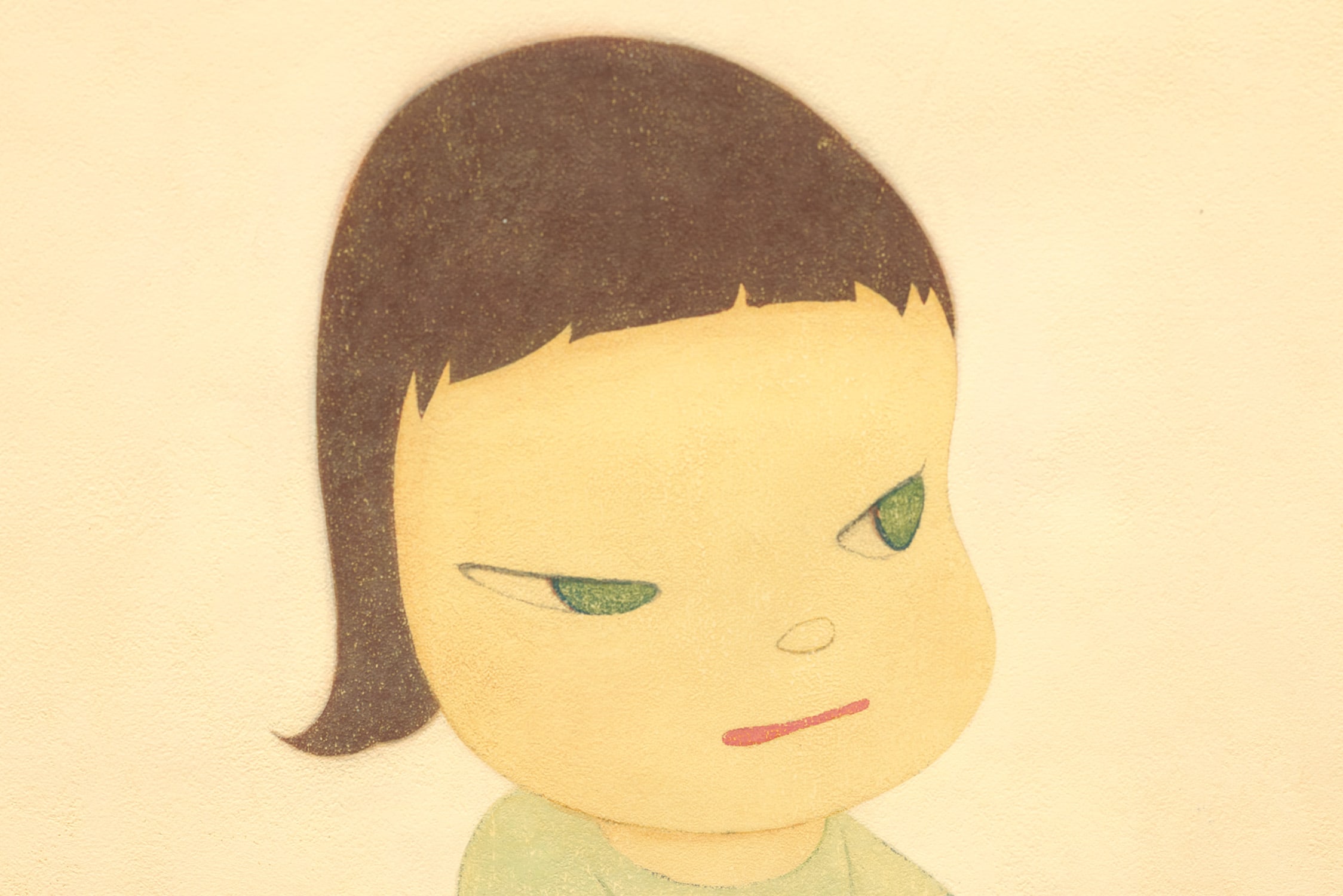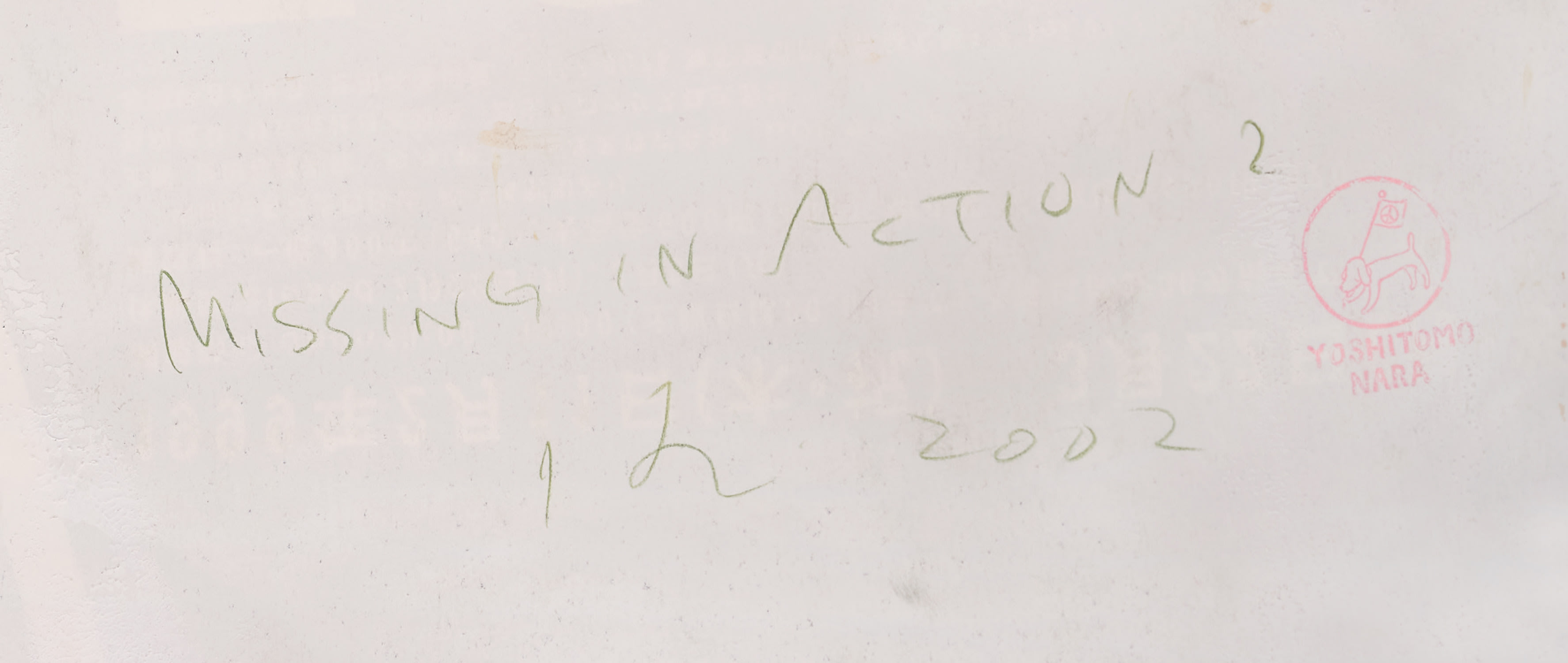







Property from a Private Danish Collector
18
Yoshitomo Nara
Missing in Action 2
signed, titled and dated '"MISSING IN ACTION 2" Nara [in Japanese] 2002' on the reverse
acrylic on paper
72.6 x 51.5 cm. (28 5/8 x 20 1/4 in.)
Painted in 2002.